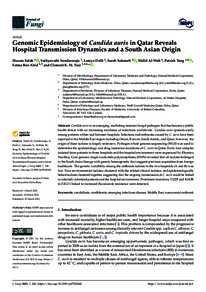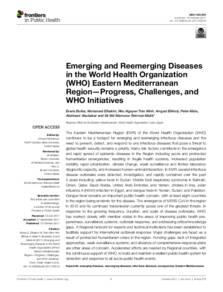وثيقة
Genomic epidemiology of candida auris in Qatar reveals hospital transmission dynamics and a south Asian origin.
المعرف
DOI: 10.3390/jof7030240
المصدر
Journal of Fungi. v. 7, 3, 240
المساهمون
Dalil, Lamya., مؤلف
Salameh, Sarah., مؤلف
Al-Wali, Walid., مؤلف
Tang, Patrick., مؤلف
Ben Abid, Fatma., مؤلف
Tsui, Clement K. M., مؤلف
الدولة
Switzerland
الناشر
MDPI AG.
ميلادي
2021-03-01
اللغة
الأنجليزية
الملخص الإنجليزي
Candida auris is an emerging, multidrug-resistant fungal pathogen that has become a public health threat with an increasing incidence of infections worldwide. Candida auris spreads easily among patients within and between hospitals. Infections and outbreaks caused by C. auris have been reported in the Middle East region including Oman, Kuwait, Saudi Arabia, and Qatar; however, the origin of these isolates is largely unknown. Pathogen whole genome sequencing (WGS) was used to determine the epidemiology and drug resistance mutations of C. auris in Qatar. Forty-four samples isolated from patients in three hospitals and the hospital environment were sequenced by Illumina NextSeq. Core genome single nucleotide polymorphisms (SNPs) revealed that all isolates belonged to the South Asian lineage with genetic heterogeneity that suggests previous acquisition from foreign healthcare. The genetic variability among the outbreak isolates in the two hospitals (A and B) was low. Four environmental isolates clustered with the related clinical isolates, and epidemiologically linked isolates clustered together, suggesting that the ongoing transmission of C. auris could be linked to infected/colonized patients and the hospital environment. Prominent mutations Y132F and K143R in ERG11 linked to increased fluconazole resistance were detected.
ISSN
2309-608X
URL المصدر
قالب العنصر
مقالات الدوريات


